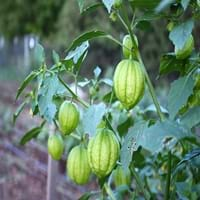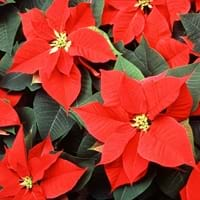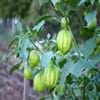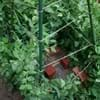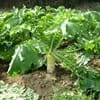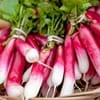Life Span
Annual
Perennial
Origin
Mexico, Caribbean, Central America
Mexico
Types
Green Tomatillo, Purple Tomatillo
Prestige Red Poinsettiea, Snowcap White Poinsettia, Sparkling Punch Poinsettia, Enduring Pink Poinsttia
Number of Varieties
Not Available
Habitat
Cultivated Beds
Forest edges, Tropical regions
USDA Hardiness Zone
6-9
9-15
Sunset Zone
A3, H1, H2, 1a, 1b, 2a, 2b, 3a, 3b, 4, 5, 6, 7, 8, 9, 10, 11, 12, 13, 14, 15, 16, 17, 18, 19, 20, 21, 22, 23, 24
H1, H2, 13, 16, 17, 18, 19, 20, 21, 22, 23, 24
Habit
Oval/Rounded
Upright/Erect
Flower Color
Yellow, Sandy Brown
Yellow, Red, Light Pink, Coral
Flower Color Modifier
Bicolor
Multi-Color
Fruit Color
Green, Purple, Yellow green
Not Available
Leaf Color in Spring
Green
Green, Dark Green
Leaf Color in Summer
Green
Dark Green
Leaf Color in Fall
Green
Dark Green
Leaf Color in Winter
Not Available
Green, Dark Green
Leaf Shape
Lance shaped
Bracts
Plant Season
Spring, Summer, Fall, Winter
Fall, Winter
Sunlight
Full Sun
Full Sun, Partial Sun
Growth Rate
Very Fast
Medium
Type of Soil
Clay, Loam, Sand
Loam, Sand
The pH of Soil
Neutral
Acidic, Neutral
Soil Drainage
Well drained
Well drained
Bloom Time
Indeterminate
Late Fall, Early Winter, Winter
Tolerances
Drought
Drought
Where to Plant?
Container, Ground
Container, Ground, Pot
How to Plant?
Seedlings
Seedlings
Plant Maintenance
Medium
Medium
Watering Requirements
Average Water Needs
Keep the ground moist but not water-logged, Requires regular watering, Requires watering in the growing season
In Summer
Drought Tolerant, Average Water
Lots of watering
In Spring
Moderate
Moderate
In Winter
Average Water
Average Water
Soil pH
Neutral
Acidic, Neutral
Soil Type
Clay, Loam, Sand
Loam, Sand
Soil Drainage Capacity
Well drained
Well drained
Sun Exposure
Full Sun
Full Sun, Partial Sun
Pruning
Remove all suckers, Remove wet foliage
Do not prune during shooting season, Prune after flowering, Prune lower leaves, Prune to control growth, Requires little pruning
Fertilizers
All-Purpose Liquid Fertilizer
All-Purpose Liquid Fertilizer
Pests and Diseases
Fungal Diseases
Bacterial Stem Rot, Botrytis Blight, Canker, Powdery mildew, Pythium rot, Rhizoctonia Root Rot
Plant Tolerance
Drought
Drought
Flowers
Insignificant
Yes
Flower Petal Number
Single
Single
Foliage Texture
Medium
Coarse
Foliage Sheen
Matte
Matte
Attracts
Birds, Flea beetles
Not Available
Allergy
Arthritis, Inflammation
Eye irritation, Mouth itching, Skin rash, Stomach burn, Throat itching
Aesthetic Uses
Not Used For Aesthetic Purpose
Beautification, Bouquets, Showy Purposes
Beauty Benefits
Good for skin
Not Available
Environmental Uses
Air purification
Air purification
Medicinal Uses
Cancer, Diabetes, Energy, Opthalmic
Fever, Pain killer, Tooth ache
Part of Plant Used
Fruits
Flowers, Leaves
Other Uses
Used for making green salsas and chilli sauce, Used in salads
Economic Purpose, Showy Purposes, Used as Ornamental plant
Used As Indoor Plant
No
Yes
Used As Outdoor Plant
Yes
Yes
Garden Design
Edible, Herb / Vegetable
Container, Feature Plant, Houseplant, Mixed Border, Tropical
Botanical Name
PHYSALIS philadelphica
EUPHORBIA pulcherrima '490 Jingle Bells'
Common Name
Green Tomato, Mexican Groundcherry, Tomatillo
Poinsettia
In Hindi
Tomatillos
Poinsettia
In German
Tomatillos
Poinsettia
In French
Tomatilles
Poinsettia
In Spanish
Tomatillos
Poinsettia
In Greek
Tomatillos
Αλεξανδρινό
In Portuguese
Tomatillos
Poinsétia
In Polish
Tomatillos
Poinsecja
In Latin
Tomatillos
Poinsettia
Phylum
Magnoliophyta
Anthophyta
Class
Magnoliopsida
Eudicotyledones
Order
Solanales
Malpighiales
Family
Solanaceae
Euphorbiaceae
Clade
Angiosperms, Asterids, Eudicots
Angiosperms, Eudicots, Rosids
Tribe
Physaleae
Not Available
Subfamily
Solanoideae
Not Available
Number of Species
Not Available
Importance of Tomatillo and Poinsettia
Want to have the most appropriate plant for your garden? You might want to know the importance of Tomatillo and Poinsettia. Basically, these two plants vary in many aspects. Compare Tomatillo and Poinsettia as they differ in many characteristics such as their life, care, benefits, facts, etc. Every gardener must at least have the slightest clue about the plants he wants to plant in his garden. Compare their benefits, which differ in many ways like facts and uses. The medicinal use of Tomatillo is Cancer, Diabetes, Energy and Opthalmic whereas of Poinsettia is Fever, Pain killer and Tooth ache. Tomatillo has beauty benefits as follows: Good for skin while Poinsettia has beauty benefits as follows: Good for skin.
Compare Facts of Tomatillo vs Poinsettia
How to choose the best garden plant for your garden depending upon its facts? Here garden plant comparison will help you to solve this query. Compare the facts of Tomatillo vs Poinsettia and know which one to choose. As garden plants have benefits and other uses, allergy is also a major drawback of plants for some people. Allergic reactions of Tomatillo are Arthritis and Inflammation whereas of Poinsettia have Eye irritation, Mouth itching, Skin rash, Stomach burn and Throat itching respectively. Having a fruit bearing plant in your garden can be a plus point of your garden. Tomatillo has showy fruits and Poinsettia has no showy fruits. Also Tomatillo is not flowering and Poinsettia is flowering. You can compare Tomatillo and Poinsettia facts and facts of other plants too.
